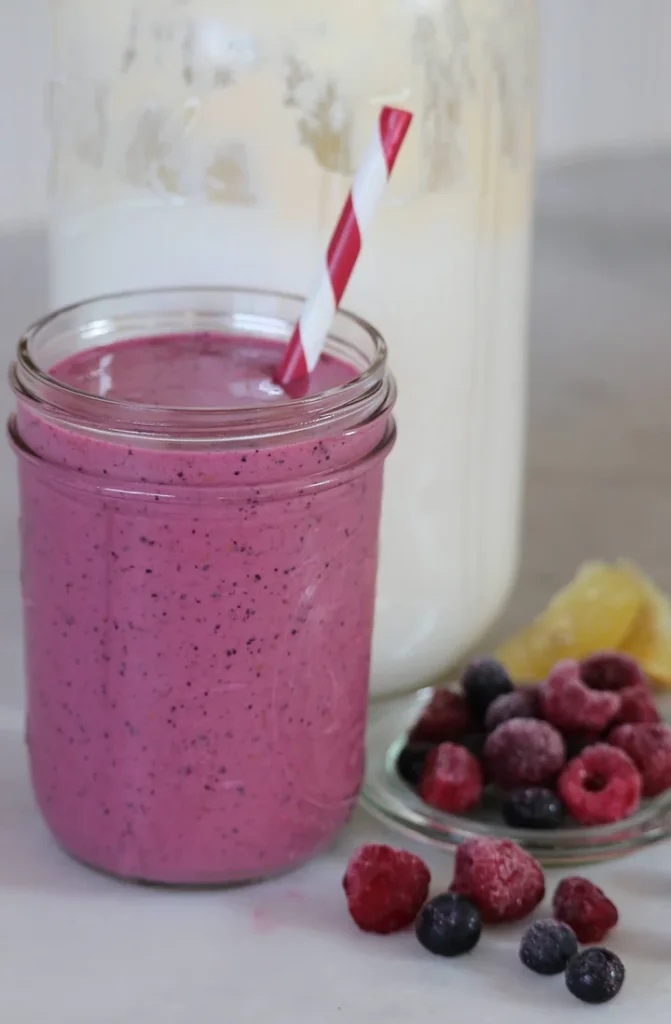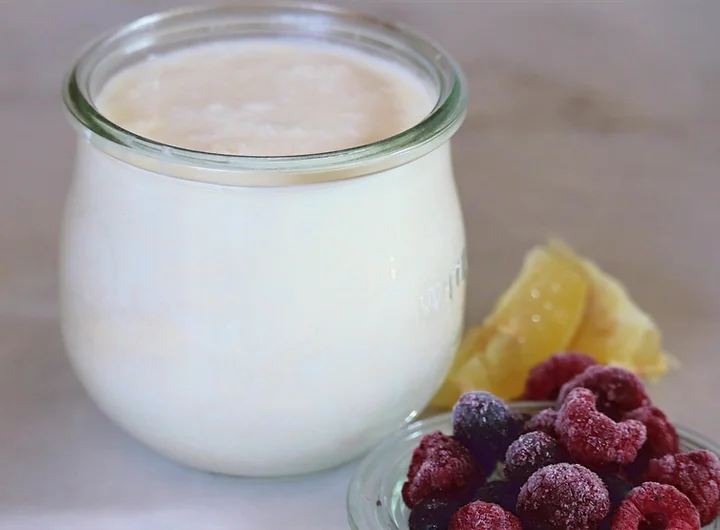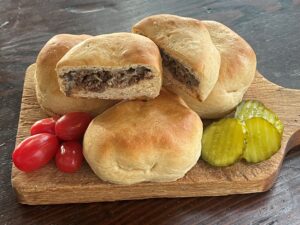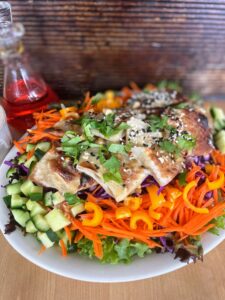The Incredible Benefits of Kefir: A Simple Superfood for Your Health
Having dairy cows over the years has led me to explore the great benefits of fermenting milk into kefir. The health benefits are quite impressive! This probiotic-rich, fermented milk has become a staple in our fridge, offering a wealth of health benefits and incredible versatility.
If you’ve never tried kefir before, let me introduce you to this powerhouse of nutrition. With just some healthy kefir grains and good-quality milk, it’s incredibly easy to make right at home. But if home fermentation isn’t your thing, don’t worry—there are some high-quality kefirs available at natural grocery stores and through Azure Standard.
What is Kefir?
Kefir is a fermented milk drink cultured from kefir grains, which are a symbiotic combination of bacteria and yeast. This traditional beverage originated in Eastern Europe and Southwest Asia, and the name “kefir” comes from the Turkish word keyif, meaning “feeling good” after eating—a fitting name for a drink with so many health benefits!
How is Kefir Different from Yogurt?
Kefir and yogurt are both probiotic-rich dairy products, but they have some key differences:
-
Probiotic Diversity – Kefir contains up to 61 strains of beneficial bacteria and yeasts, whereas yogurt typically contains fewer strains, mostly bacteria.
-
Fermentation Process – Yogurt is made with specific bacterial cultures that thicken milk, while kefir is fermented using kefir grains, which contain a complex mix of bacteria and yeast.
-
Texture & Taste – Yogurt has a thicker, spoonable consistency, while kefir is more liquid and drinkable, with a slightly tangy, effervescent taste.
-
Lactose Content – Kefir is generally lower in lactose than yogurt, as its beneficial bacteria help pre-digest lactose, making it easier to tolerate for those with lactose sensitivities.
Why Drink Kefir? The Health Benefits Are Incredible!
When I first started researching kefir, I was amazed by how much this simple drink can do for overall health. Here are just a few of the impressive benefits:
✅ Packed with Probiotics – Kefir is one of the richest probiotic foods available, containing up to 61 strains of beneficial bacteria and yeasts—far more than yogurt! These microorganisms aid digestion, promote gut health, and may even support weight management and mental well-being.
✅ Supports Bone Health – Kefir is an excellent source of calcium, and when made from full-fat milk, it also provides vitamin K2, a crucial nutrient for bone density and reducing the risk of fractures.
✅ Easier to Digest Than Milk – Thanks to its fermentation process, kefir is naturally low in lactose. The beneficial bacteria help pre-digest the lactose, making kefir a great option for those who are lactose intolerant.
✅ Immune-Boosting Properties – Kefir contains bioactive compounds and probiotics that may help strengthen the immune system, fight infections, and even improve allergies and asthma symptoms.
✅ Versatile and Delicious – You can use kefir in any recipe that calls for buttermilk or milk, but my favorite way to enjoy it is blended with frozen berries and a touch of maple syrup for a quick, nutritious snack.
How to Make Kefir at Home
Making kefir is simpler than you might think! All you need is:
-
Kefir grains (available online, at health food stores or through Azure Standard)
-
Fresh, whole milk (preferably from grass-fed cows for maximum nutrition)
-
A glass jar and a breathable cover
-
Add 1-2 tablespoons of kefir grains to 2 cups of milk in a clean glass jar.
-
Cover loosely with a cloth or coffee filter and secure with a rubber band.
-
Let it ferment at room temperature for 12-24 hours, depending on your taste preference.
-
Once thickened, strain out the kefir grains and store your finished kefir in the fridge. Use the grains to start a new batch.
How to Use Kefir
Kefir is an incredibly versatile ingredient that can be incorporated into many different meals. Here are some great ways to use it:
-
A Buttermilk Substitute – Kefir works perfectly as a replacement for buttermilk in baked goods like pancakes, muffins, and biscuits, adding a delicious tang and tenderness.
-
Smoothies – Blend kefir with greens, fruit, and a touch of honey or maple syrup for a refreshing and nutrient-packed breakfast or snack.
-
Creamy Dressings & Sauces – Use kefir as a base for salad dressings, dips, or creamy sauces to add a probiotic boost to your meals.
-
Soaking Whole Grains & Flour – Kefir can be used to soak whole grain flour before baking. The acid in kefir activates the enzyme phytase, which helps break down phytic acid found in bran, improving the availability of vitamins and minerals. Soaking grains in kefir also provides lactic acid, which helps make difficult-to-digest proteins more accessible.
-
Nourishing Traditions – The cookbook Nourishing Traditions by Sally Fallon features wonderful recipes that take advantage of the benefits of soaked whole grains, making them more digestible and nutrient-dense.
Simple and Delicious Kefir Recipes
Berry Kefir Smoothie
A quick and nourishing way to enjoy kefir!
Ingredients:
-
1 cup kefir
-
½ cup frozen berries (blueberries, raspberries, or strawberries)
-
1 small banana
-
1 tsp honey or maple syrup (optional)
-
½ tsp vanilla extract (optional)
Instructions:
Blend all ingredients together until smooth. Enjoy immediately!
Kefir Pancakes
These fluffy, probiotic-rich pancakes make a delicious breakfast.
Ingredients:
-
1 cup kefir
-
1 cup flour (or ½ cup whole wheat, ½ cup all-purpose)
-
1 egg
-
1 tbsp melted butter or coconut oil
-
1 tbsp honey or sugar
-
1 tsp baking soda
-
½ tsp salt
Instructions:
-
In a bowl, mix kefir, egg, melted butter, and honey.
-
In another bowl, whisk together flour, baking soda, and salt.
-
Combine wet and dry ingredients, stirring just until mixed.
-
Cook on a greased skillet over medium heat until bubbles form, then flip and cook the other side.
Creamy Kefir Salad Dressing
A tangy and probiotic-packed dressing for salads or dipping.
Ingredients:
-
½ cup kefir
-
2 tbsp olive oil
-
1 tbsp lemon juice or apple cider vinegar
-
1 small garlic clove, minced
-
1 tsp honey or Dijon mustard
-
½ tsp salt
-
¼ tsp black pepper
-
1 tbsp chopped fresh herbs (like dill or parsley)
Instructions:
Whisk all ingredients together in a small bowl. Drizzle over fresh greens or use as a dip for veggies.
Where to Find Kefir
If making your own kefir isn’t for you, high-quality kefir is available at many natural grocery stores and through suppliers like Azure Standard. Look for organic, full-fat options with live active cultures for the best benefits.
Final Thoughts
Kefir is one of nature’s simplest and most effective superfoods. Whether you make it at home or buy it ready-made, adding kefir to your diet is a fantastic way to support digestion, immunity, and overall well-being. So why not give it a try? Your gut (and your taste buds) will thank you!








